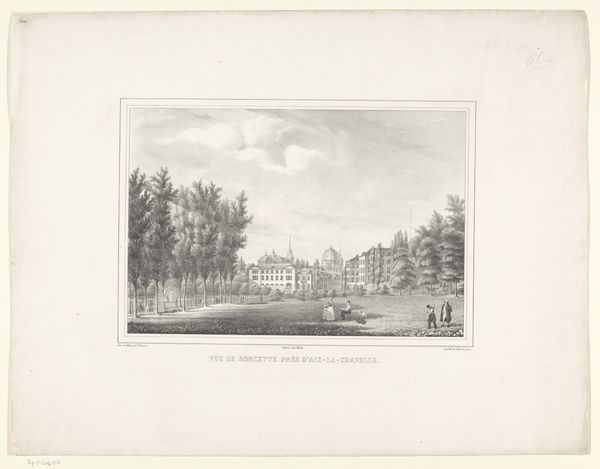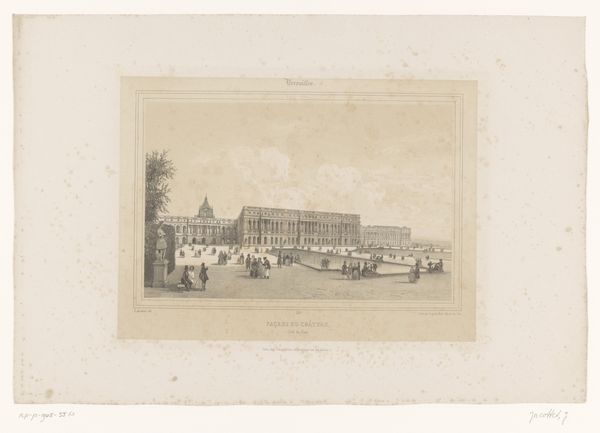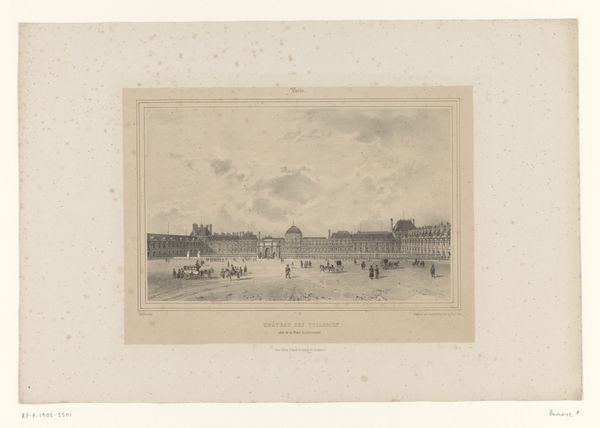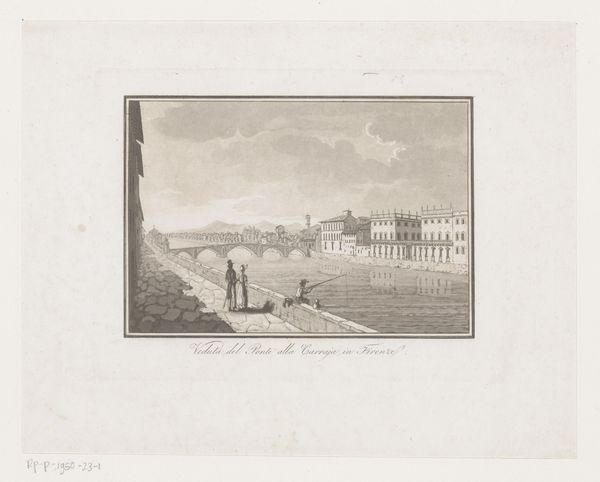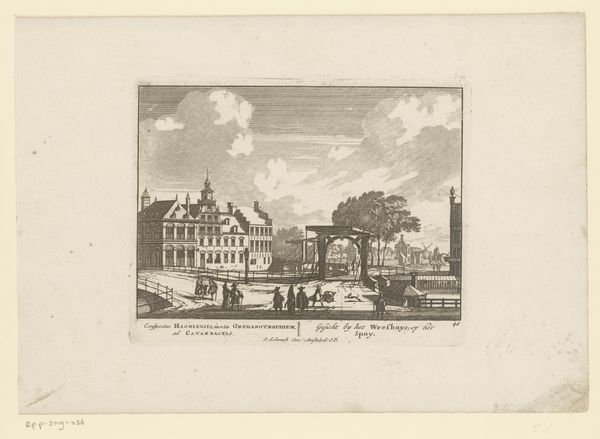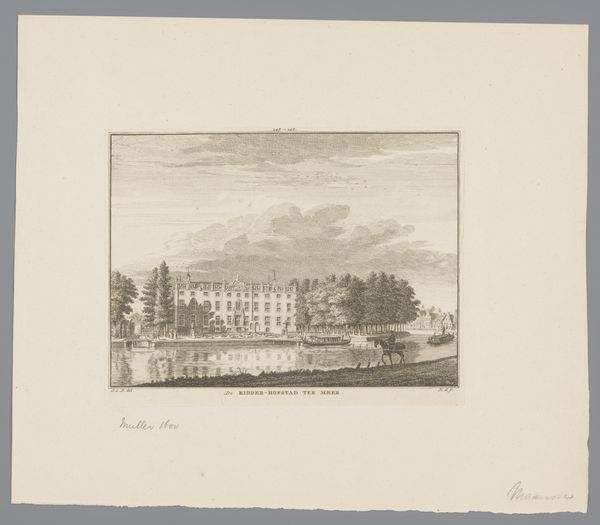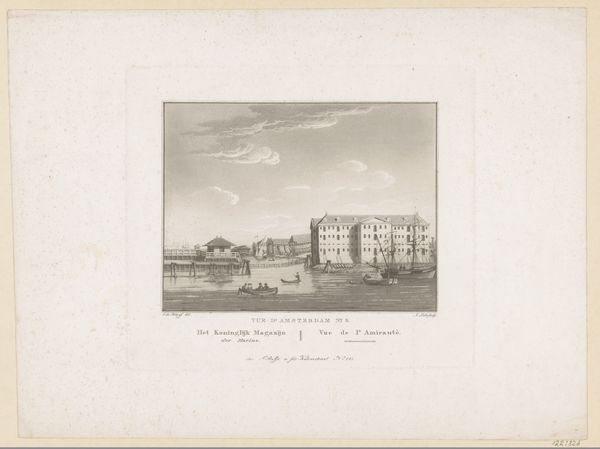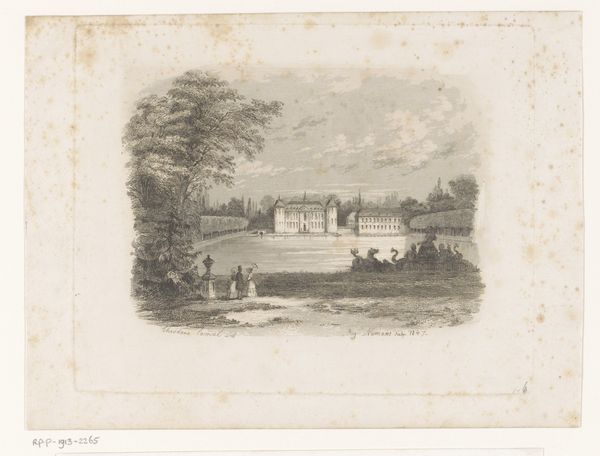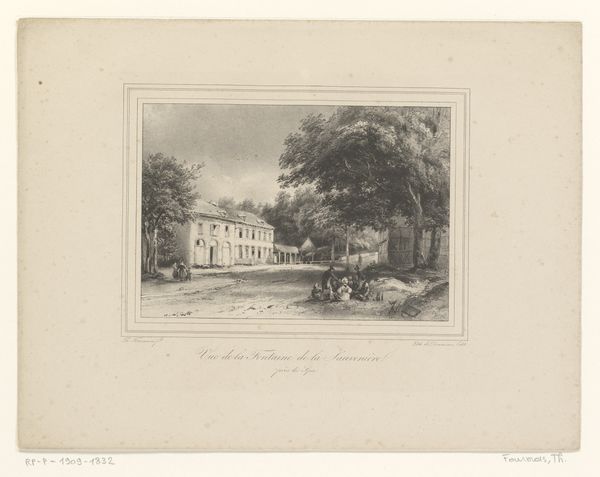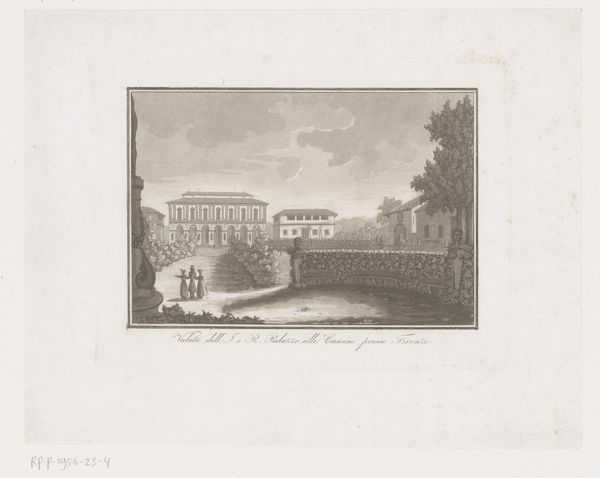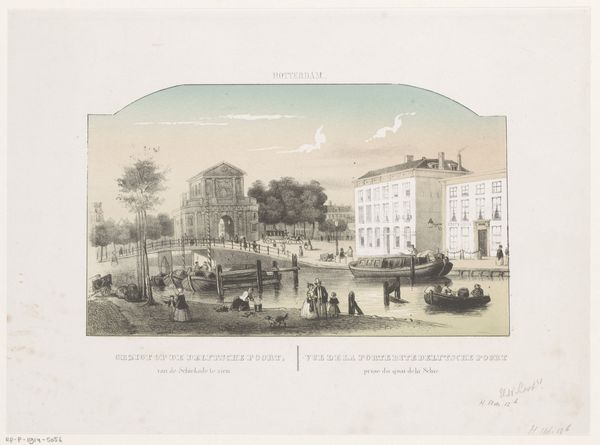
Zicht op het Palais du Luxembourg vanuit de Jardin du Luxembourg 1838
0:00
0:00
louisjulienjacottet
Rijksmuseum
print, etching
# print
#
etching
#
landscape
#
romanticism
#
cityscape
Dimensions: height 303 mm, width 449 mm
Copyright: Rijks Museum: Open Domain
Curator: This delicate print offers a view of the Palais du Luxembourg from its garden. Made in 1838 by Louis-Julien Jacottet, it is an etching that captures a Romantic-era cityscape. Editor: The immediate impression is one of tranquility, wouldn't you agree? The symmetrical layout, the soft greys, create a soothing, almost dreamlike image. Curator: Yes, and note how the social context of this public garden in the 19th century provides space for diverse interactions. Consider who had access and who might have been excluded, something artists in that era only implicitly addressed. How might gender and class play out in this "public" space? Editor: Precisely, but focusing solely on gender and class overlooks the masterful use of line to create depth. Observe how the etched lines thicken in the foreground, adding dimension to the pool and figures, then subtly fade into the background detailing the palace architecture. Curator: Indeed. Let's acknowledge the role the Luxembourg Palace held after the French Revolution; its various uses represented shifting power dynamics and how societal progress and oppression co-existed. Etchings such as this not only depicted locations but promoted specific narratives that reflected the ruling class and their goals for public space. Editor: A vital observation. Thinking of formal artistic strategies though, how does the rigid architecture juxtapose with the organic placement of people scattered across the garden, a beautiful and dynamic design choice. Curator: Which echoes similar social stratifications playing out in Parisian society itself, even within idealized public spaces. Editor: Undoubtedly. I can see so much careful observation on display that might give glimpses into this period’s self-conception of public image and architecture. I hadn’t seen Jacottet capture so many details that are seemingly simple from afar but more nuanced upon closer inspection. Curator: This has offered me a fresh lens for seeing these public spaces not simply as beautiful renderings of landscape but political and social landscapes shaped and populated through implicit codes. Editor: And, for me, it reaffirms the endless complexities of an artistic technique to define its message, medium, and context.
Comments
No comments
Be the first to comment and join the conversation on the ultimate creative platform.

